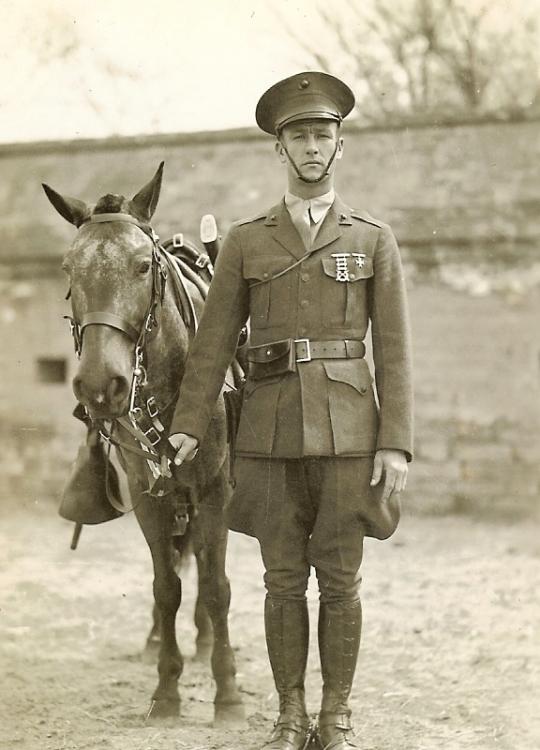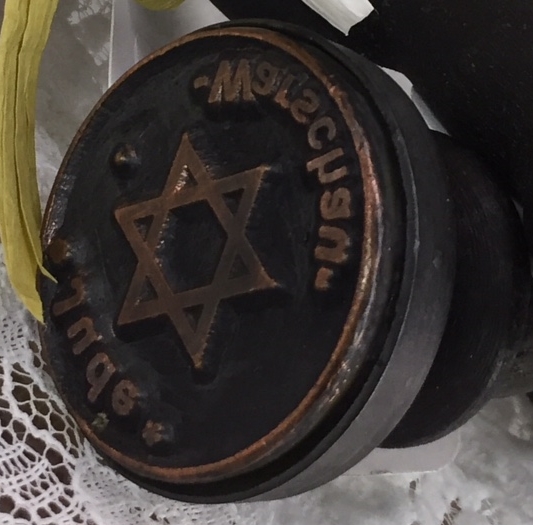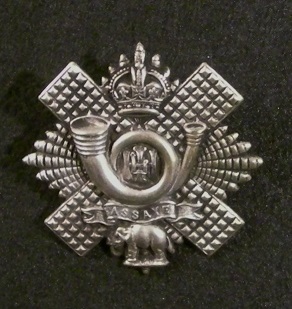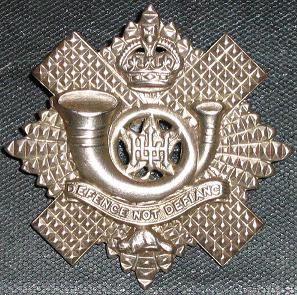-
Posts
4,862 -
Joined
-
Last visited
-
Days Won
15
Content Type
Profiles
Forums
Blogs
Gallery
Events
Store
Posts posted by peter monahan
-
-
Good thing I didn't guess 'German', eh? I think I'm right, however, in suggesting that the Greek royal family wasn't very Greek, ethnically speaking. Wasn't/Isn't Prince Phillip of that lineage?
0 -
I'm going to stick my neck out and say 'Probably not' without actually doing any checking. The cord work on the epaulette looks Continental to me and the sash[?] over the right shoulder isn't part of any British order of dress i recognize.
0 -
A qucik check at Ancestry.ca shows a George Henry Alexander Hart being baptized in Dorset in July of 1896. Also, a man of that exact name, listed as a 'bank manager' arrives in Liverpool from Montevideo in 1948 and a 'George Hart' - 'student', so possibly a son? - arrives in the UK in 1952.
here is the record of his marriage too: George Henry Alexander Hart
Birth: July 1896 (Jul 1896) - Dorset
Marriage: 25th May 1922 (25 May 1922) - Brazil
Spouse: Gladys Amelia Weston
F: George Henry Hart M: Edith Mary Hansford PM me if you'd like me to send you a copy of his birth certificate and if you don't have it already.
0 -
Julio
The search function on the London Gazette is best described as 'unreliable' - it misses things fairly often, I think because the letter recognition programme is an earlier version of now more sophisticated 'finder'. Very frustrating.
Any number of infantrymen wound up in the Royal Flying Corps and, after May 1, 1917, the RAF. Perhaps due to the high wastage among pilots. One often hears of officers transferring over - at their own request - but two chaps from my area near Toronto, Canada signed up directly and were sent to train in the UK. Both died in trainign accidents, one on Nov. 11, 1918. It's not clear what they had to make them desireable - perhaps education? - but easy to imagine that somebody with a publci school education, for example, might have joined the Army in a fit of patriotism then decied or had it suggested that he's be more useful in the Flying Corps.
0 -
-
Julio
I'm a little embarassed that I can't recall whether or not a Mention in Despatches at the Division level ** would be in the London Gazette, but the gazette for the award of the DFC should be in there.
Wiki say this about Milne, so he was a Divisonal commander when he signed this, I think.:
** At the outbreak of the First World War in July 1914, Milne was commanding the divisional artillery of 4th Division... He joined the general staff of III Corps in January 1915 and... promoted to major general on 23 February 1915... He was appointed General Officer Commanding (GOC) 27th Division in July 1915.
0 -
Oh, I wasn't planning on buying, just wondered what they were or purported to be. But I must admit it never occured to me that people would be faking such. Silly me!
0 -
Try looking for the name on some of these lists:
https://search.findmypast.com/search-world-records/british-army-honourable-artillery-company
Good luck!
0 -
I have just come across these two stamps in an antique mall here in Canada. the one with the Star of David says 'Jude' and 'Warschau', but I cannot puzzle out the wording on the other, backwards and in Gothis script. Can anyone tell me what it says, in german or English, and perhaps the significance of the two, though I suspect I can guess then latter. Thanks.
Peter
0 -
No harm, no foul. As I say, the wooden container for some reason says 'Malay' or some such to me, so I wonder whether the Cdn chap had Dad's badge with him and paid a local to incoporate it into the souvenir. An interesting piece anyway.
0 -
Irrelevant to the main discussion but as soon as I saw Owain's 'disqulaified' 6 point star I wondered 'because of Israel?'
 0
0 -
I hate to disagree but I simply can't see a beaver in this badge and the elephant is not a feature of the HLI of Canada badge. Or are there two badges here and I'm confused?
HLI on top, HLI of Canada below. I'm more interested in the 'locally made' wooden container to which it is attached. There should be a good story attached to that, as I'd guess the original owner of the badge commissioned the piece and said 'put this badeg on the front' or words to that effect. But where? S E Asia would be my guess, but just a guess.
0 -
My extensive knowledge of Chinese and French allows my to read 'Provisional Government of the District of Tientsin' on one side.
And here it is! https://en.wikipedia.org/wiki/Tianjin_Provisional_Government. Picture of the medal in the article. perhaps with that as a starting point you'll be able to track down the Captain, who may be British or American, I'd think, as the other nations involved were Russia, Japan, Germany, France, and Italy, as per the flags. A link to the famed 'Boxer Rebellion'!
0 -
Wonderful stuff! Given the state of aviation technology, the fact that two crews both survivied being shot down strikes me as noteworthy and to be able to get this knd of info. on the men, their experiences and their families is golden. Thank you for sharing!
0 -
Superb! But then, we expect nothing les from you. Are these available for sale/export?
0 -
It is not uncommon, in my somewhat limited experience, for 'foreign awards' and minatures in particular to have the wrong ribbons simply because the correct ones were not available to the tailor/jewelller when a set was being made up. And, if one receives such a set, finding the correct ribbons, especially for strange awards which one's peers won't recognize anyway, is probably not high on the 'must do' list.
0 -
Wow! Twice. Once for a nice 'double issue', as I suspect that the R.E.Y. twice is very probably the same man and once for the identification by Michael.
The Colombo lodge medal must be a fairly rare item as well.
Peter
0 -
Can you describe the medal, or show us a picture, please, us57? I'm afraid I'm a 'visual learner' and a photo is much more likely to jog my old brain. Thanks.
0 -
A masterful summation, Mark!
0 -
Very cool! So, clearly some effort went into producing an efficient implement. Not surprising, I suppose, given how dangerous snakes can be.
My neighbour in Nigeria was out 'admiring the stars' [read 'smoking where his wife couldn't see him] and had a 6 foot spitting cobra curl up on the path between he and the house. Much excitement ensued, but what Mal remembered most and was highly indignant about was that the night watchman - barefoot, of course - absolutely refused to leave his post inside Mal's garage once he's figured out it was a snake! Mal was a NWF Pathan by birth, so he knew about snakes and eventually killed it, but only after it got into his chicken coop. Two chickens died, but I was always convinced one if not both were killed by Mal swingin a chair leg and not by snake venom!
I was out yesterday at a gun show and saw a lovely cane with a small [6" x 3"] steel 'hammer' as a head, which the seller suggested was intedned as a defensive weapon. It looked as if it would seriously dent a cranium if swung or thrown! he thought it might be Hunarian, though he didn't say why. I think we tend to underestimate the deadliness of a well handled stick/staff/club because they are not part of our modern landscape.
BTW, enjoying your posts immensely.
P
0 -
Welcome to the GMIC, Ed. I was going to suggest that you might have posted this in the 'German Imperial' section for uniforms and equipment, but clearly some other members look at posts in multiple areas! I 'm glad Bayern was able to help.
Lovely piece of kit, BTW.
 0
0 -
Same problem here: every link I click on takes me to a lovely photo of a river in Costa Rica. Nice, but not very relevant.
 0
0 -
Huzza! Thanks for sharing this, Ross.
0 -
Looks like an excellent snake-stick. I rarely went out at night during my 2 years in West Africa, but if I had one of these would have been useful. A lot of the snakebite victims coming to see the local missionaries, who ran a 'dispensary', had trodden on snakes while walking paths at night. The snakes lie up on the earthen paths which have been warmed all day by the sun.

Is there anything 'special' about the stick, Rusty? A certain type of wood? The finish, other than having been de-barked? We tend to assume that people 'make' such tools as opposed to simply picking them up as needed and I assume this is an example of a 'purpose-built' utensil/weaopon.
Peter
0









Unknown VC Winer
in Great Britain: Orders, Gallantry, Campaign Medals
Posted
Mutiny Medal [under his shoulder belt] and a two bar [???] Medal is what it looks like. IGS 1895 would have him a very long service man indeed but I think I see a tri-colour ribbon. Clearly a Rifles unit, or perhaps one of the Indian units with Rifles or LI affilitiations.
The manner of wearing the medals suggests to me an earlier - pre-1880-90 - time period, as does the facila hair but other than that, now great insights I'm afraid. I'd focus on the Mutiny.